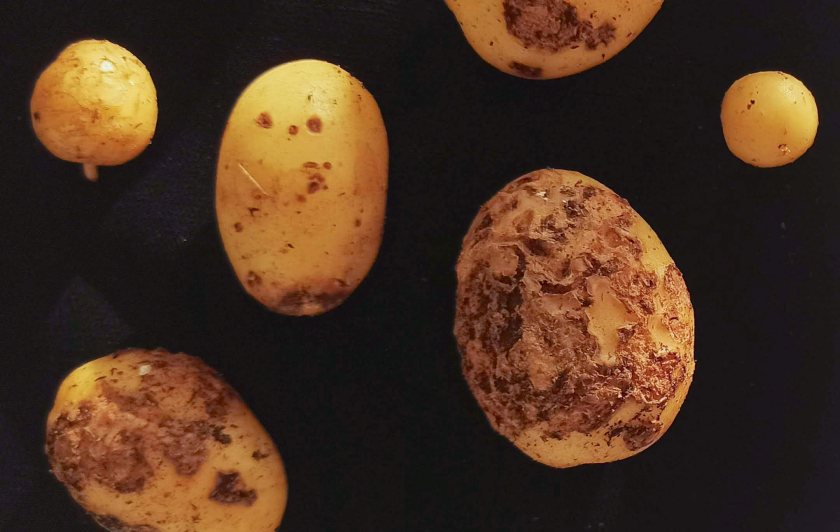
Scientists have developed an innovative method of controlling a range of damaging crop diseases using native, beneficial soil bacteria.
The agri-tech innovation hopes to give farmers a way to reduce the cost and environmental damage caused by the chemical treatments currently in use to control crop diseases.
The John Innes Centre team isolated and tested hundreds of strains of Pseudomonas bacteria from the soil of a commercial potato field, and then sequenced the genomes of 69 of these strains.
By comparing the genomes of those strains shown to suppress pathogen activity with those that did not, the team were able to identify a key mechanism in some of the strains that protected the potato crop from harmful disease-causing bacteria.
Then using a combination of chemistry, genetics and plant infection experiments they showed that the production of small molecules called cyclic lipopeptides is important to the control of potato scab, a bacterial disease that causes major losses to potato harvests.
These small molecules have an antibacterial effect on the pathogenic bacteria that cause potato scab, and they help the protective Pseudomonas move around and colonise the plant roots.
The experiments also showed that irrigation causes substantial changes to the genetically diverse Pseudomonas population in the soil.
First author of the study, Dr Alba Pacheco-Moreno said: "By identifying and validating mechanisms of potato pathogen suppression we hope that our study will accelerate the development of biological control agents to reduce the application of chemical treatments which are ecologically damaging.
“The approach we describe should be applicable to a wide range of plant diseases because it is based on understanding the mechanisms of action that are important for biological control agents,” she added.
The study, which appears in eLife, proposes a method by which researchers can screen the microbiome of virtually any crop site, and take into account varying soil, agronomic and environmental conditions.
By exploiting advances in high-speed genetic sequencing, the method can screen the soil microbiome for therapeutic bacteria and work out which molecules are being produced to suppress pathogenic bacteria.
They can also show how these beneficial bugs are affected by agronomic factors such as soil type and irrigation.
The next step for the new approach is to put the beneficial bugs back into the same field in greater numbers or in cocktails of mixed strains as a soil microbiome boosting treatment.
